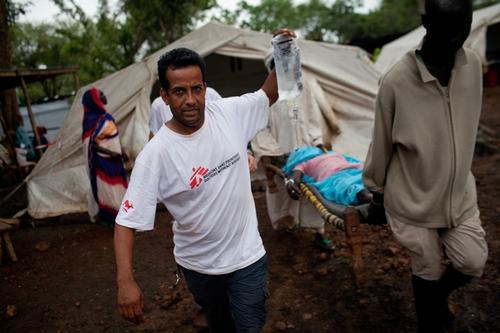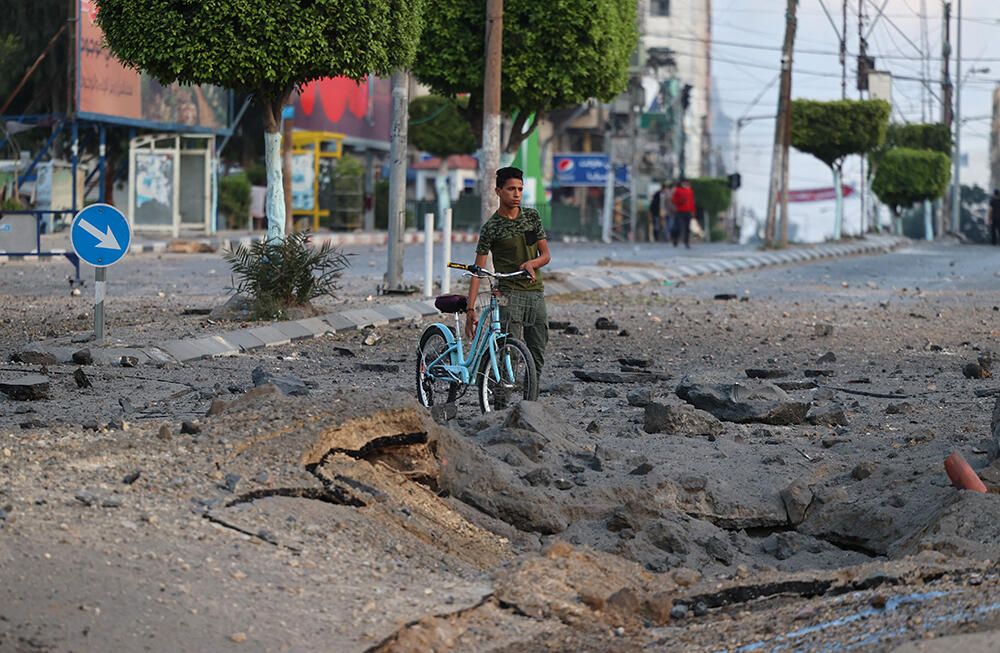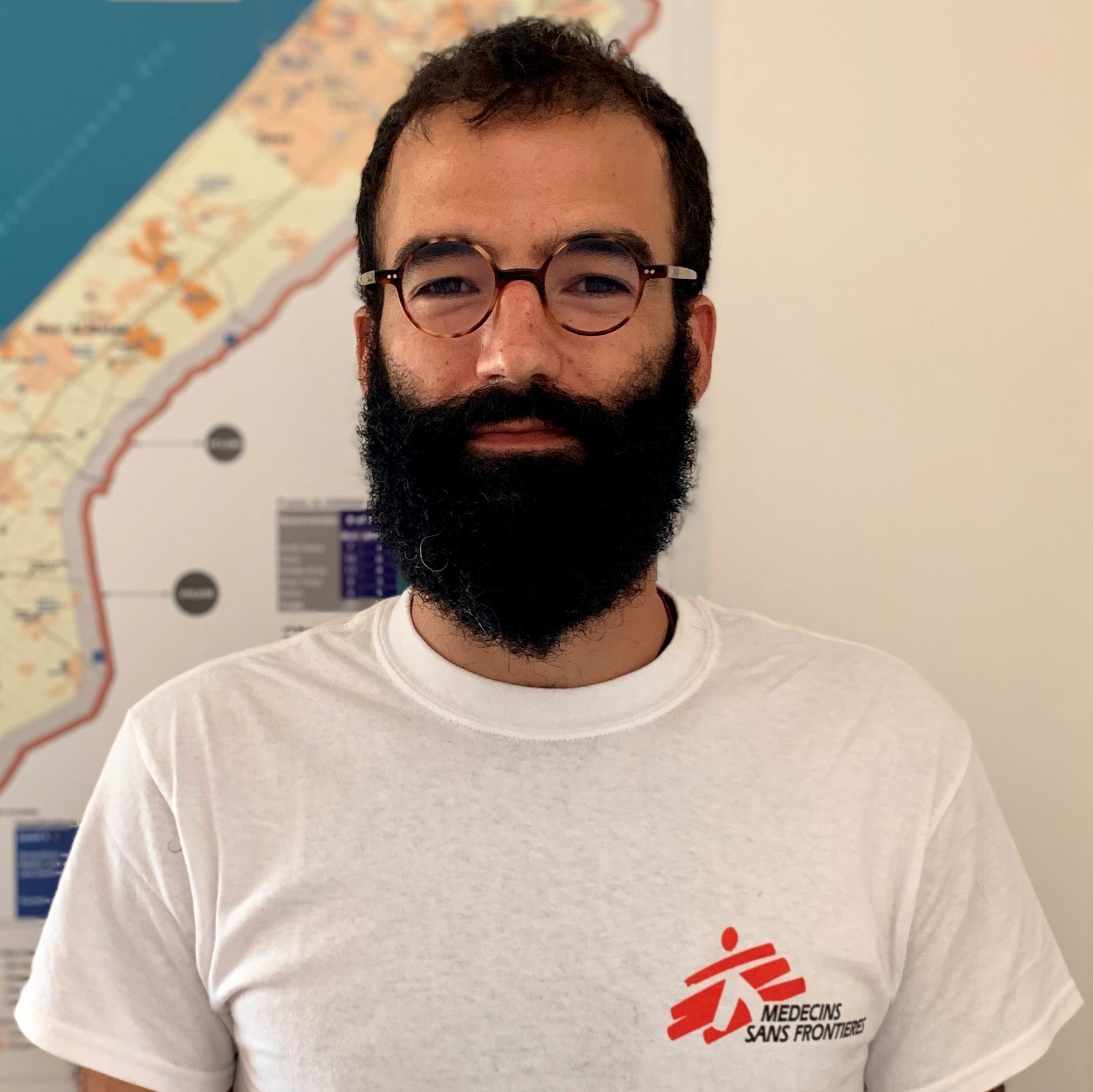Gaza: The devastating impact of conflict on children's mental health
Psychiatrist Juan Paris looks back on the 11 days of intense airstrikes launched by the Israeli army on Gaza and the consequences of the daily violence for people’s mental health.
Children who have lived in an enclave under blockade for almost 15 years are particularly vulnerable.
The teams in Gaza tell us about horrific bombings of an intensity they’ve never seen before. The recent violence is nothing like the war in Gaza in the summer of 2014.
Even people who’d seen it all before were seriously affected by the fighting and taken by surprise at the acute fear they felt. Their loved ones were their main concern, especially their children, needing to know if they were coping physically and emotionally.
Support networks were set up really fast, with lots of messages shared in private groups on social media. They exchanged photos of their families and said what they were doing to help their children get through the airstrikes. They supported each other.
Their conversations reveal a great deal of fear – especially of being killed in an airstrike in the night – but also mutual support. Do we all have food and water? Has everyone received a message about security in a particular neighbourhood?
"Every new war destroys the fabric of Gazan society that bit more"
The level of violence during the 11 days reminded them of previous conflicts, rekindling a profound sense of injustice and helplessness.
Through it all, they carried on working, with no breaks. As aid workers and Gazans, they’re twice as exposed to the realities of life in the Gaza Strip that’s been under blockade for almost 15 years. They treat people wounded in the conflict.
In recent years, most have been Great March of Return protestors, many presenting with bullet wounds in their legs.
So the teams in Gaza are exposed, both professionally and personally. Their work reminds them of how hard life is for people living there, what with the fighting, poverty, unemployment and lack of protection for their children. They’re attached to their land, to their memories, torn between hope and the reality of their everyday lives.
Nearly half of Gazans are children
Forty percent of Gaza’s population is under the age of 14 – that’s one million children. All they have ever known is the blockade imposed by Israel and Egypt. Nothing else.
They’ve lived through several Israeli offensives, the suppressed Great March of Return protests, and now this campaign of massive airstrikes.
Outside the periods when the violence escalates, airstrikes are common occurrences in Gaza; sporadic strikes launched at night. Added to the spikes in the fighting, these events accumulate over time and reduce the children’s capacity to get through them.
This is their reality, and it’s how the people we care for describe it. Their access to basic services and the outside world is extremely limited. Young adults in their 20s also lived through the Second Intifada in the early 2000s.
Every new war destroys the fabric of Gazan society that bit more. It affects their families, their parents who struggle to survive, find work, get enough money to avoid sinking into poverty, survive the fighting – physically as well as emotionally.
"A depressed person is more likely to recover from their illness when they’re surrounded by people in good health"
This accumulation of traumatic events has long-term consequences for Gaza’s children and adolescents.
A bomb that falls on Gaza City destroys not only a building, but also an entire system that used to protect them. They don’t have a safety net anymore.
For example, when schools close due to the fighting, children don’t have a safe space where they can interact and play together. There’s a domino effect.
Hidden by stigma
A depressed person is more likely to recover from their illness when they’re surrounded by people in good health.
In Gaza, the whole family structure is impacted by these brutal and recurrent events. It’s the same in the West Bank, although the situation is different there. For example, we provide care to children in Nablus in the north of the West Bank. They’re growing up in an occupied city and are aware they might be arrested, harassed or abused.
Travel in the West Bank is restricted and depends on the goodwill of the occupying power, Israel.
Exposure to this violence can have socio-economic consequences, which means more precarity and mental health issues with higher percentages of psychosis, depression and post-traumatic stress disorder [PTSD], but also a higher prevalence of non-communicable diseases like diabetes, asthma and cancer.
We see the same phenomenon among migrants arriving in Europe and African-American and Hispanic communities in the US.
Forty percent of young Gazans suffer from mood disorders, 60-70 percent suffer from PTSD and 90 percent suffer from other stress-related conditions. The number of suicides and attempted suicides rose steadily in 2020, but they’re clearly under-reported because of the stigma around mental health issues in Palestinian society.

Help us prepare for the next emergency
MSF in Occupied Palestinian Territories
Palestine comprises parts of modern Israel and the Palestinian territories of the Gaza Strip and the West Bank.
This region, known as the Holy Land, holds religious significance for Christians, Muslims and Jews, and has been the object of conflicting claims, which has led to prolonged violence and, at times, open warfare.
On Monday 10 May 2021, Médecins Sans Frontières / Doctors Without Borders (MSF) started supporting the Palestinian Red Crescent Society (PRCS) in Jerusalem to assess and stabilise hundreds of Palestinians injured by the Israeli police.
Between 10 – 18 May 2021, Israeli airstrikes and shelling killed 213 people, including 61 children, and injured more than 1,400. Twelve people, including two children, have been killed in Israel by rockets and missiles launched by Palestinian armed groups.

